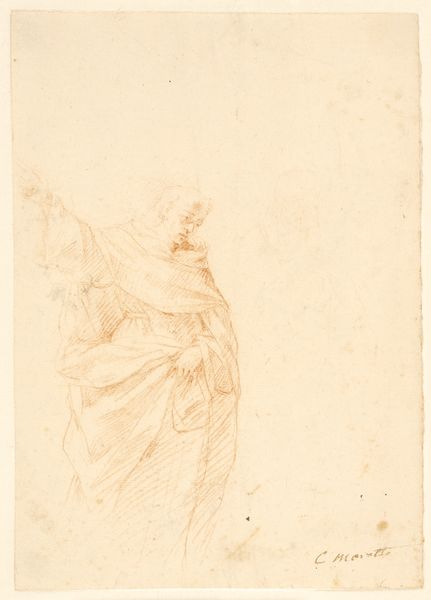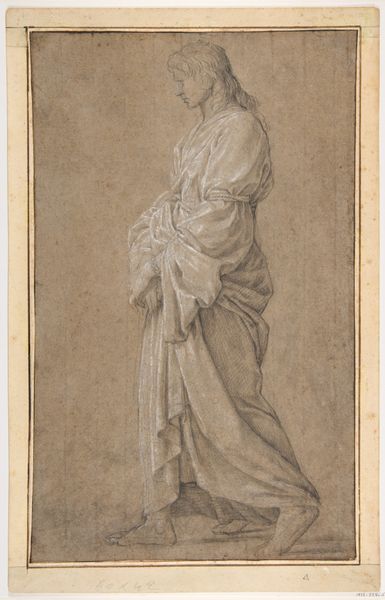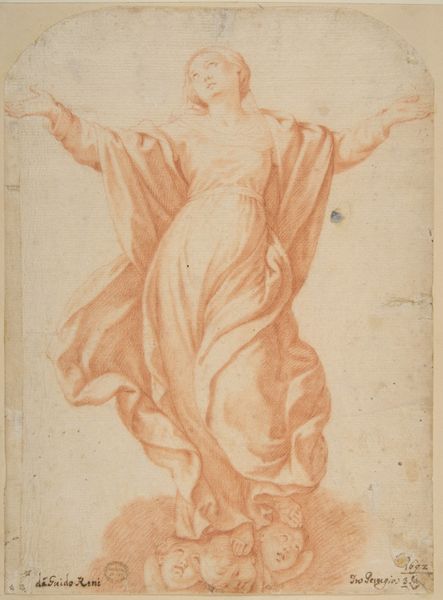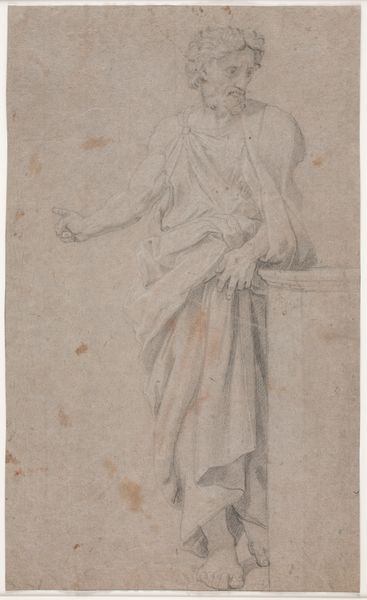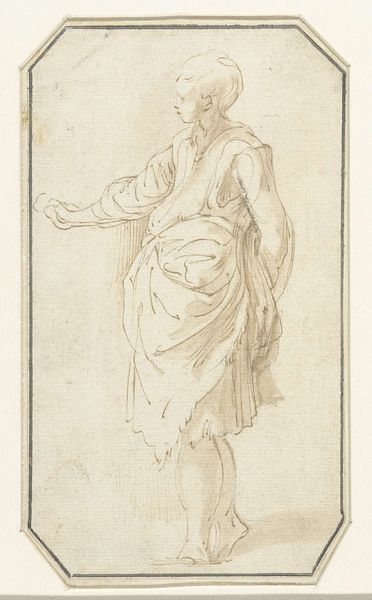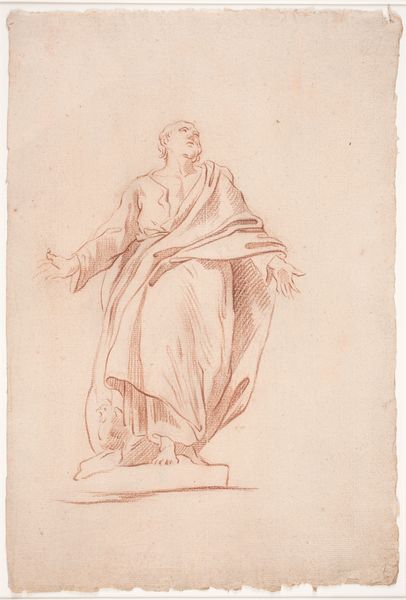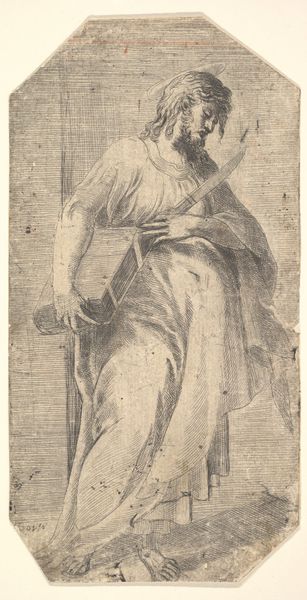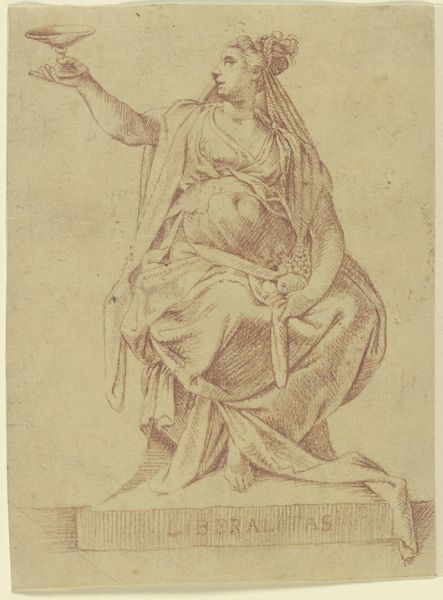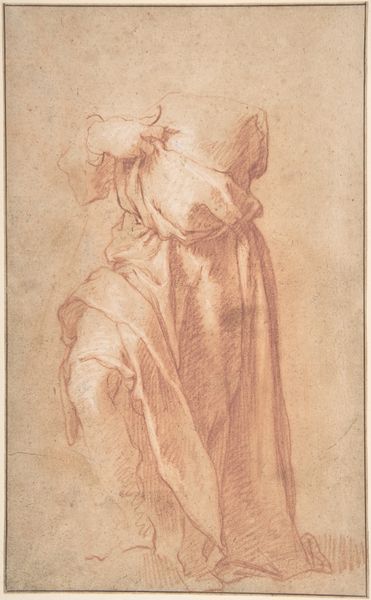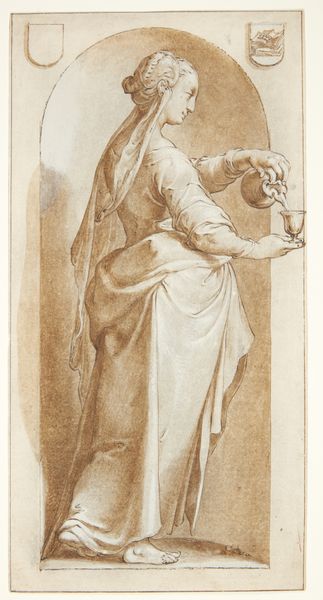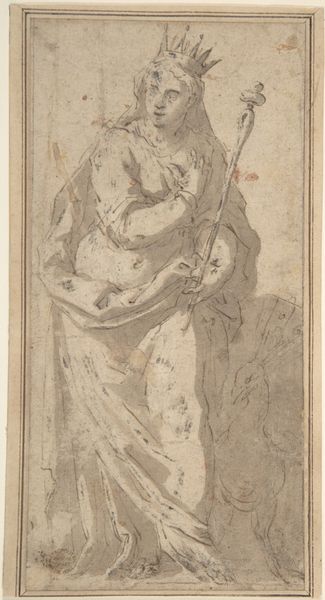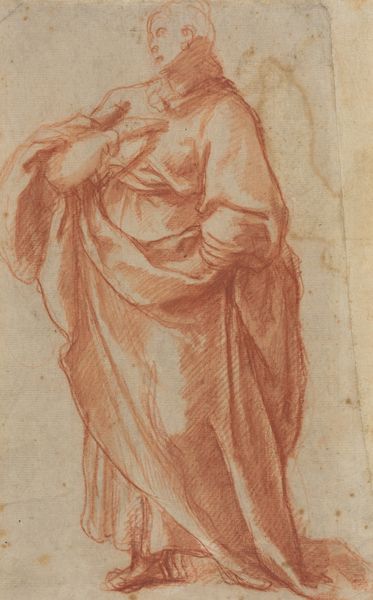
drawing, print, paper, pencil, pen
#
portrait
#
drawing
#
baroque
# print
#
charcoal drawing
#
figuration
#
paper
#
pencil drawing
#
pencil
#
pen
#
history-painting
#
academic-art
Dimensions: 10 1/2 x 7 3/16in. (26.7 x 18.3cm)
Copyright: Public Domain
Editor: We're looking at "The Virgin Immaculate," a drawing by Pietro da Cortona, created sometime between 1596 and 1669. It's done with pencil, pen and charcoal on paper and kept at the Metropolitan Museum of Art. I'm struck by how gentle and serene it is, especially with the use of a single reddish tint to create form and emotion. How do you interpret this work? Curator: Considering its historical context, the piece offers insight into the power dynamics between the church and artistic patronage during the Baroque era. The Immaculate Conception was a highly debated theological issue; how does this image position itself within that socio-political landscape? Is it reinforcing doctrine, or offering a more nuanced perspective on the Virgin Mary? Notice how Cortona uses the Baroque style, characterized by drama and emotional intensity, to visually emphasize the Virgin’s purity and grace. Editor: So, the artistic choices here reflect not just faith, but a wider social discussion. What makes this different than just art illustrating the bible? Curator: Exactly. This image isn’t merely illustrating a religious figure. The fact that it's disseminated as a print speaks volumes. Prints had a crucial role in disseminating ideas and propaganda during the Early Modern period, impacting visual culture. What sort of consumer was expected? Were images like this meant to teach and inspire, or perhaps sway public opinion on theological matters? Consider how it both reflects and shapes the social perception of the Virgin Mary at the time. Editor: It's fascinating how the art can reflect the issues of the day, both religious and political. I hadn't considered its distribution as a key part of the artwork. Thanks for that context! Curator: Indeed. Looking at art through a historical lens, the interplay between faith, politics, and artistic expression becomes quite clear. It encourages us to think critically about art's public role.
Comments
No comments
Be the first to comment and join the conversation on the ultimate creative platform.
